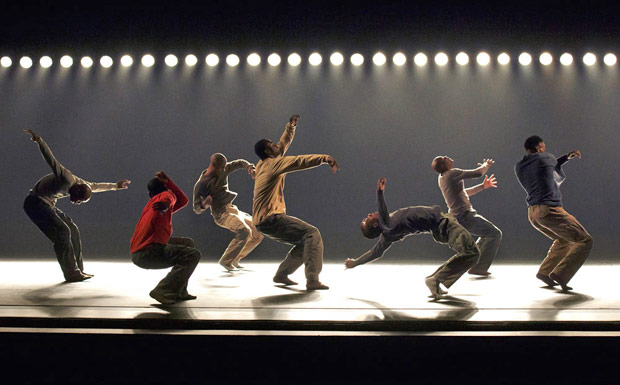
© Paul Kolnik. (Click image for larger version)
Alvin Ailey American Dance Theater
All New: Uprising, Grace, Revelations
New York, City Center
13 December 2014
www.alvinailey.org
www.nycitycenter.org
Years ago, when a freak summer storm overtook the Joffrey Ballet’s outdoor performance of the romantic piece Pas des Déesses, I thought the evening was headed from bad to worse. But the ballet, which had been a yawn, transformed from just a showcase of ethereal femininity into art where something was really at stake – namely the dancers making it through the piece. At one point a dancer executed a flurry of fouetté turns as high winds blew her long tutu into her face. The storm, perversely, made the ballet even more romantic – it seemed like a total supernatural spectacle – and elevated a conventional ballet into an exploration of the boundaries of human willpower.

© Paul Kolnik. (Click image for larger version)
At Alvin Ailey American Dance Theater’s December 13th show, another type of storm overtook, and in many ways elevated, a dance. Their performance of Hofesh Shechter’s Uprising (2006), danced inside the well-appointed City Center, took place the same night as tens of thousands of protestors walked through the city. This demonstration, the Millions March, was a kind of culmination to nation-wide protests sparked by the two separate deaths of unarmed African-American men at the hands of law enforcement.
Millions March NYC 2014 from Simone on Vimeo.
Shechter’s Uprising eerily paralleled the uprising outside. At times the dance seemed almost a scripted re-enactment of the images bombarding our social media news feeds: groups walking in solidarity, shoving confrontations, men being choked, lifeless bodies on the ground, protest “die-ins” by masses.

© Paul Kolnik. (Click image for larger version)
But unlike the undifferentiated masses in protest “die-ins”, in Uprising we were left to contemplate individuals dying again and again after physical conflict. The tableau of African-American men dead on the floor after being choked also served to refocus the nationwide debates on race and policing that seemed to be derailed by political punditry.
While Uprising has many indelible moments, at the same time it suffers from some missteps: music intended to be dramatic is just bombastic, attempts at humor fall flat and the “dance logic” of the piece never comes together. There were many dancer interactions that had unintentional ambiguity. But in spite of these serious flaws, the Ailey men make it work. Every single movement was fully committed and interesting and had me asking, “What next?”

© Paul Kolnik. (Click image for larger version)
Uprising was bookended by Ronald K. Brown’s Grace and Alvin Ailey’s Revelations two masterpieces – storm or no storm. Grace has a religious theme but this piece is most interested in transformation. With its soulful mix of Detroit house and Fela Kuti’s Afro Pop, it’s the closest thing to secular ecstatic dancing I have ever seen. Revelations also has a religious theme. Ailey said that it contained his “blood memories” of his childhood growing up in Texas and in the Baptist church. It is a national treasure; set to spirituals it enshrines African-American cultural heritage and history. These dances make me hopeful. Which, in these tumultuous times is a strange feeling.

© Paul Kolnik. (Click image for larger version)






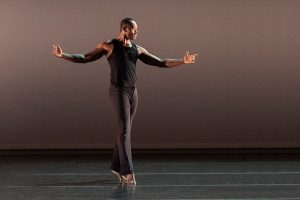
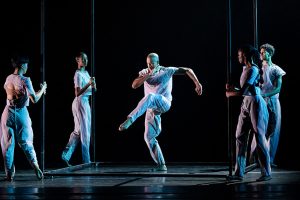
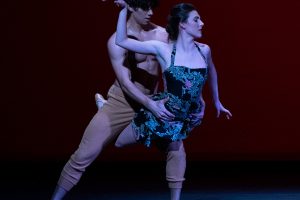
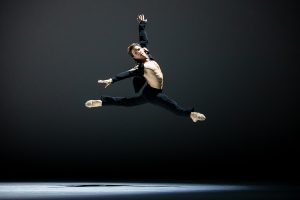
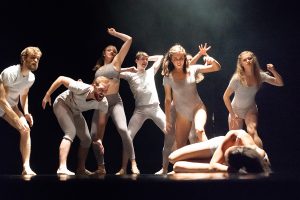

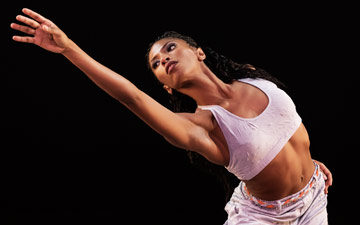
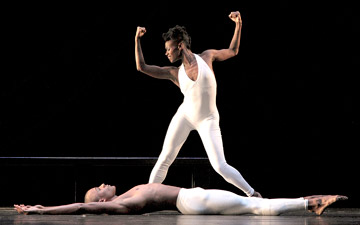

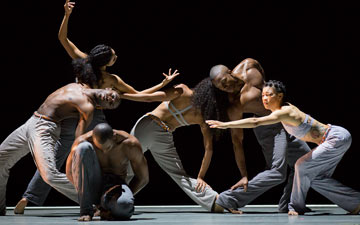
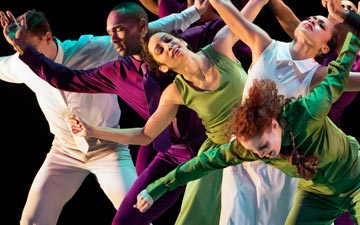
You must be logged in to post a comment.